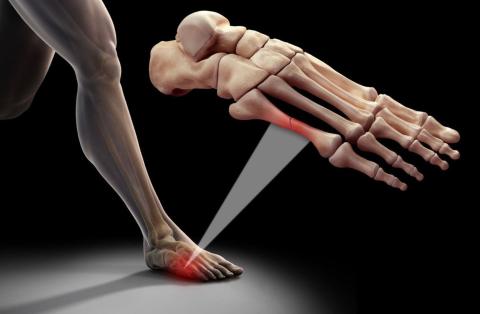
Foot pain is a common complaint among runners, and one of the more concerning possibilities behind that discomfort is a stress fracture. Stress fractures, especially those in the foot, can sideline a runner for months, making it crucial to recognize the warning signs early and take steps to prevent this injury.
A stress fracture is a tiny crack in the surface of a bone, commonly occurring in the lower leg or the metatarsals of the foot in runners. These fractures often develop gradually, resulting from repetitive stress on the bone over time. Stress fractures typically begin as a stress reaction, where the bone starts to swell internally. Without proper attention, this reaction can progress into a full-blown fracture.
The key to managing a stress fracture is recognizing the symptoms early. If you experience persistent, pinpoint pain that worsens with activity, it’s essential to stop running and consult a doctor immediately. Ignoring the pain or continuing to run through it will only exacerbate the injury.

There are a few simple ways to test for a stress fracture at home, though it’s important to remember that a clinical diagnosis from a doctor is always the best course of action.

Several factors can contribute to the development of a stress fracture:
If you suspect you have a stress fracture, the first step is to apply ice to the affected area and take anti-inflammatory medications as recommended. However, stress fractures are not injuries that should be self-diagnosed or self-treated. It’s important to consult a doctor who may order an X-ray or, more likely, an MRI to confirm the diagnosis, as stress fractures often don’t appear on X-rays until they start healing.
Once diagnosed, the primary treatment is rest. Staying off the injured foot and giving it time to heal is essential. Depending on the location of the fracture, healing times may vary, with stress fractures farther from the heart often taking longer due to reduced blood flow.
However, having a stress fracture doesn’t mean you need to stop all exercise. Low-impact activities like swimming or cycling can help maintain your cardiovascular fitness without placing additional stress on the injured bone. Additionally, this time off from running can be used to build strength through resistance training, which can help prevent future injuries.
Preventing stress fractures begins with smart training practices. Gradually increase your mileage, following the general rule of not adding more than 10 percent to your weekly total. Shortening your running stride and increasing your cadence to around 160 to 180 steps per minute can also reduce the stress on your bones.
Proper nutrition is another crucial factor. Ensure you’re getting enough calcium—about 1,000 milligrams per day for adult runners—to maintain strong bones. Incorporate calcium-rich foods like yogurt, milk, cheese, tofu, and dark leafy greens into your diet. Additionally, a balanced intake of calories, vitamins, and minerals is essential for overall bone health.
For more content find us via the app store:
Discover More Content





